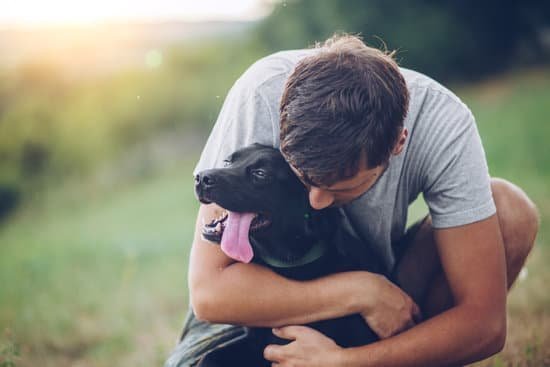Potty training multiple older dogs can be a daunting task, but with proper preparation and patience, it can be done. Here are a few tips to help make the process a little easier:
1. Start by establishing a regular potty routine. This will help your dogs get into a rhythm and make it easier for them to learn what is expected of them.
2. Make sure you are taking your dogs out frequently, and always after meals, naps, and playtime.
3. If your dogs are having trouble getting the hang of things, try using a special command or signal to let them know it is time to go potty.
4. Reward your dogs with treats or praise when they go potty in the correct spot.
5. Be patient and consistent – it may take a little while for your dogs to get the hang of things, but with patience and perseverance, you will be able to successfully potty train them.
How Do I Crate Train An Older Dog
?
Crate training an older dog can be a bit more difficult than training a young pup, but it’s definitely doable. The key is to be patient and consistent with your training methods.
First, you’ll need to choose the right crate for your dog. It should be big enough for him to stand up and turn around in, but not too big – otherwise he’ll just use one end as his bed and the other as a toilet.
Next, start by getting your dog used to the idea of being in the crate. Put a few treats in the crate and let him explore it on his own. Once he’s comfortable going in and out, begin closing the door for short periods of time. gradually increase the amount of time he spends in the crate.
If your dog starts to whine or bark, don’t let him out until he’s quiet. This will help him learn that whining and barking won’t get him what he wants.
Once your dog is comfortable spending extended periods of time in the crate, you can start using it as a training tool. Put him in the crate when you’re not able to supervise him, and let him out when you can. This will help teach him that the crate is a place for rest and relaxation, not a place for mischief.
How To Train An Older Dog Not To Bark
If you have an older dog who barks excessively, it can be frustrating and difficult to train them to stop. However, with patience and perseverance, it is possible. The key is to start with basic obedience commands and to reward your dog for good behavior.
First, make sure that you are giving your dog enough exercise. A tired dog is less likely to bark. Regular walks and playtime will help to wear your dog out and keep them calm.
Next, start working on basic obedience commands such as sit, stay, and come. Be consistent with your commands and rewards, and make sure to praise your dog when they obey.
If your dog is barking for attention, provide them with positive attention when they are quiet. This could include petting them, feeding them a treat, or playing with them.
If your dog is barking out of fear or anxiety, you may need to seek the help of a professional trainer. They can help you to create a training program specifically for your dog and teach you how to properly handle and treat their anxiety.
Crate Training An Older Dog With Separation Anxiety
If you have an older dog that is experiencing separation anxiety, crate training may be the answer for you. Dogs that are crate trained are more likely to have a positive association with their crate, which can help to reduce their anxiety when left alone.
The first step in crate training an older dog with separation anxiety is to make sure that the crate is big enough for them to comfortably stand up, turn around, and lie down in. You may also want to consider purchasing a crate with a divider, so that you can gradually make the crate smaller as your dog becomes more comfortable with it.
Once you have the crate set up, begin by feeding your dog their meals in the crate. Once they are comfortable eating in the crate, begin gradually adding in short periods of time where you are not in the room with them. Once they are comfortable with being in the crate for short periods of time, you can start leaving them in the crate for longer periods of time.
If your dog begins to experience any anxiety while in the crate, make sure to immediately let them out. It is important to be patient and take things slow when crate training an older dog with separation anxiety. With time and patience, your dog will likely come to enjoy being in their crate, which will help to reduce their anxiety when left alone.
Training Older Dogs Not To Bark
Many older dogs have spent their entire lives barking and have no idea how to stop. This can be a major problem, especially if the dog lives in an apartment or condo. In most cases, it is not difficult to train an older dog to stop barking, but it will require patience and consistency on your part.
The first step is to determine why your dog is barking. Once you know the reason, you can start to work on a solution. Common reasons for barking include boredom, excitement, fear, and territoriality.
If your dog is barking out of boredom, you will need to provide him with plenty of exercise and stimulation. A tired dog is less likely to bark. Kong toys are a great way to keep a dog entertained, and you can also hide treats around the house to keep him occupied.
If your dog is barking out of excitement, you will need to start by teaching him to sit and stay. Once he is reliably sitting and staying, you can start to work on teaching him to calm down. One way to do this is to put a leash on your dog and walk him around until he is relaxed. You can also use a ThunderShirt to calm your dog down.
If your dog is barking out of fear, you will need to start by teaching him to relax. One way to do this is to put a leash on your dog and walk him around until he is relaxed. You can also use a ThunderShirt to calm your dog down. Once your dog is relaxed, you can start to work on desensitizing him to the things that scare him. This may take some time and patience, but it is worth it in the end.
If your dog is barking out of territoriality, you will need to start by teaching him to sit and stay. Once he is reliably sitting and staying, you can start to work on teaching him to calm down. One way to do this is to put a leash on your dog and walk him around until he is relaxed. You can also use a ThunderShirt to calm your dog down. Once your dog is relaxed, you can start to work on teaching him to “leave it.” This means that you will need to train him to ignore other animals and people when they are out on a walk.
It is important to be patient and consistent when training an older dog not to bark. If you are patient and consistent, your dog will eventually learn to stop barking.

Welcome to the blog! I am a professional dog trainer and have been working with dogs for many years. In this blog, I will be discussing various topics related to dog training, including tips, tricks, and advice. I hope you find this information helpful and informative. Thanks for reading!





